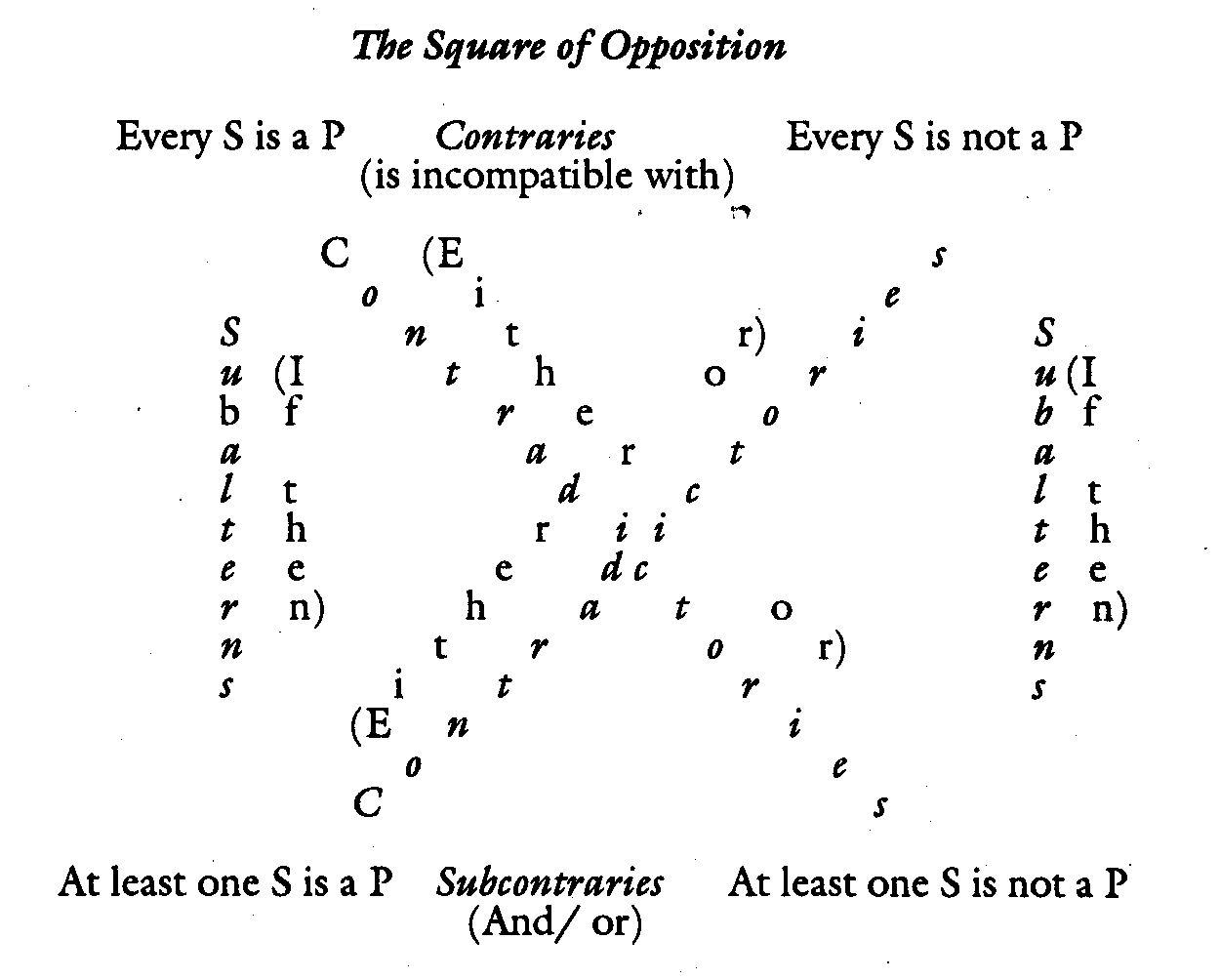
Chapter 6
Compounds using subjects and predicates
That is all I am going to say about connecting whole propositions. Now to proceed to logical ways in which the peculiarities of subjects and predicates can allow you to combine two propositions and draw conclusions from them, let me start with "square of opposition," which is, the four possible propositions that have the same subject and predicate. It turns out that they are connected in all the ways we have talked about except "and." When we are talking about any old subject and any old predicate, by the way, the capital S is used for "Subject" and P is used for "Predicate."

So the two definite propositions (the contraries) are incompatible with each other. It can't simultaneously be the case that every human being is a typist and every human being is not a typist--and using this example, you can see that they both happen to be false.
The definite propositions imply the corresponding indefinite one (using the rule I gave above that subjects are always taken to refer to something)--and the implied one is called the "subaltern" of its definite proposition. If every human being were a typist, then at least one would be a typist; if every human being were not a typist, then at least one would not be a typist.
The indefinite propositions (the subcontraries) are "and/or's": "At least one human being is a typist and/or at least one human being is not a typist"; and with this example both happen to be true; but they can't both be false.
Finally, each of the propositions is related by "either/or" to its contradictory (the one that has the opposite reference and the opposite "quality"). Either every human being is a typist, or at least one is not a typist. Either at least one human being is a typist, or every human being is not a typist.
Next